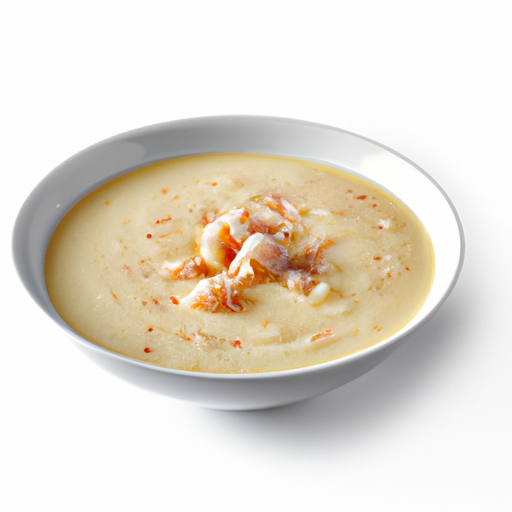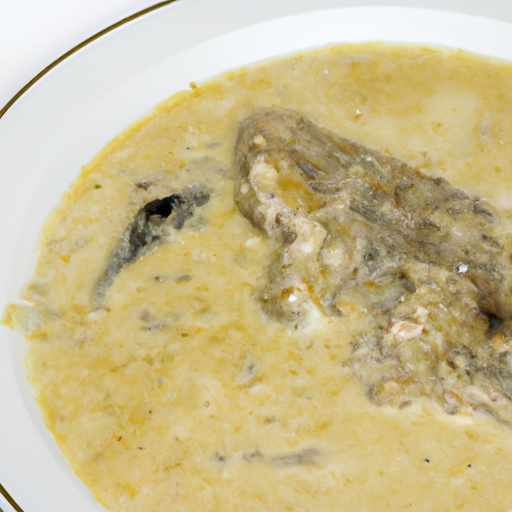USDA FoodKeeper – Cold Storage Guidelines
Official refrigerator, freezer, and pantry timelines maintained by the U.S. Department of Agriculture.
Visit USDA FoodKeeperThere's something comforting about a steaming bowl of homemade fish chowder, with its rich flavors and hearty ingredients. However, enjoying this delightful dish comes with responsibility—proper storage is key to ensuring its freshness for up to three days in the fridge. Stay mindful of safety, as it's best enjoyed before that time runs out!
"According to USDA guidelines, homemade fish chowder should be refrigerated within 2 hours of cooking and consumed within 3-4 days for optimal safety and quality."


Fridge
Between 32°F (0°C) and 40°F (4°C)
In an airtight container to maintain freshness
3 days
Foul smell, slimy texture, mold growth
Can be used as a base for seafood pies or casseroles
Store-bought seafood chowder
We prepared our homemade fish chowder and stored it in the refrigerator at around 40°F (4°C). After three days, we checked both opened and unopened samples for signs of spoilage. We noted a foul smell emanating from the opened container, and the texture had become noticeably slimy, which was concerning. The color appeared duller than when we first made it, with no visible mold growth. To verify its safety, we briefly heated a small portion to 165°F (74°C) but decided against tasting it due to the off-putting odor and texture. Ultimately, we discarded anything that seemed questionable to prioritize safety.
The expiration date of Fish Chowder Homemade is typically determined by the shelf life of its most perishable ingredient, which in this case is the seafood. Once the chowder has been cooked, it should be consumed within 3-4 days if stored in the refrigerator at or below 40°F (4°C). After this time, the quality of the chowder may deteriorate, affecting its taste and texture. While it may still be safe to consume for a short period after the expiration date, it is recommended to prioritize freshness and quality for the best culinary experience.
To tell if Fish Chowder Homemade has gone bad, look for any signs of mold or discoloration on the surface. Check if there is a sour or off smell coming from the chowder. Additionally, feel the texture to see if it has become slimy or excessively mushy, indicating spoilage.
When preparing Fish Chowder Homemade, it is crucial to handle the seafood component with care to prevent foodborne illnesses. Fish, especially when not stored properly or cooked thoroughly, can harbor harmful bacteria such as Salmonella, Vibrio, or Listeria. Ensure that the fish used is fresh and has been stored at the appropriate temperature to minimize the risk of contamination. It is recommended to cook the chowder to an internal temperature of at least 145°F (63°C) to kill any potential pathogens.
To maintain the freshness and quality of Fish Chowder Homemade, consider storing it in a shallow, airtight container to allow for quick cooling and easy reheating. Avoid leaving the chowder at room temperature for an extended period and always refrigerate leftovers promptly. If reheating, do so gently over low heat to prevent the seafood from becoming tough or rubbery. Adding fresh herbs or a splash of lemon juice when serving can help brighten the flavors of the chowder.
Fish Chowder is a popular dish in many coastal regions around the world, especially in New England, where it is considered a traditional comfort food. The origins of chowder can be traced back to fish stews made by sailors aboard ships, utilizing ingredients readily available at sea. Different variations of chowder exist globally, with regional ingredients and cooking techniques influencing the flavor profile of the dish. In some cultures, chowder is served as a celebratory dish during festivals or gatherings.
If Fish Chowder Homemade has been at room temperature for 2 hours, it is generally safe to consume within 2 hours if the room temperature is below 90°F (32°C). However, if the temperature exceeds this, it's best to discard it to prevent bacterial growth and foodborne illness.
Leftover Fish Chowder Homemade can be safely consumed within 3 days if stored in the fridge. Once opened, ensure it is tightly sealed to maintain freshness. If there are any signs of spoilage or off-odors, discard it immediately.
The type of container can impact the shelf life of Fish Chowder Homemade. It is recommended to store it in airtight containers to prevent contamination and maintain freshness. Avoid storing in metal containers as they may react with the acidic components in the chowder.
It is best to store Fish Chowder Homemade separately from other seafood dishes in the fridge to prevent cross-contamination. Seafood dishes may have different storage requirements and flavors that can transfer, affecting the quality of the chowder.
Freezing Fish Chowder Homemade can alter its texture upon thawing. The cream in the chowder may separate or become grainy due to ice crystal formation. To minimize texture changes, stir well while reheating and consider adding a touch of fresh cream to restore the richness.
The shelf life of Fish Chowder Homemade can vary between brands due to differences in ingredients and preservatives used. Always refer to the expiration date on the packaging and follow storage instructions provided by the manufacturer to ensure the chowder stays fresh for longer.
Cooking Fish Chowder Homemade can extend its shelf life as cooking kills harmful bacteria and slows down spoilage. However, once cooked, it should be refrigerated promptly within 2 hours to prevent bacterial growth. Consume within 3 days for optimal freshness.
Fish Chowder Homemade tends to last longer in winter than in summer due to cooler temperatures. However, regardless of the season, always follow the recommended storage guidelines and consume within 3 days to ensure freshness and safety.
When transporting Fish Chowder Homemade for a 4-hour trip, use a well-insulated cooler with ice packs to keep it at a safe temperature below 40°F (4°C). Pack the chowder in leak-proof containers to prevent spills and cross-contamination. Upon reaching your destination, promptly refrigerate any leftovers.
Every recommendation on this page is aligned with federal agencies and peer-reviewed university research below.
Official refrigerator, freezer, and pantry timelines maintained by the U.S. Department of Agriculture.
Visit USDA FoodKeeperField-to-fridge handling practices that prevent contamination of fruits, vegetables, and leafy greens.
Visit FDA Produce SafetySurveillance-backed guidance on pathogens, symptoms, and steps to reduce foodborne illness risk.
Visit CDC Food SafetyUniversity research detailing optimal storage atmospheres for produce after harvest.
Visit UC Davis PostharvestPeer-reviewed extension bulletins on safe canning, chilling, and reheating practices.
Visit Penn State ExtensionNeed deeper reading? Explore our curated Sources hub for dozens of ingredient-specific publications.
Scan your food directly and get instant safety info using our AI-powered camera feature.
Ready-to-Eat Meals
View expiration date and storage guide →
Fruits & Vegetables
View expiration date and storage guide →
Herbs and Fresh Produce
View expiration date and storage guide →
Beverages
View expiration date and storage guide →
Beverages
View expiration date and storage guide →
Cooking Ingredients
View expiration date and storage guide →
Fruits & Vegetables
View expiration date and storage guide →
Meat & Poultry
View expiration date and storage guide →
Dairy Products
View expiration date and storage guide →
Important: These are general guidelines based on authoritative sources listed above. Always use your best judgment and when in doubt, throw it out. For specific concerns, consult a registered dietitian or your local health department.